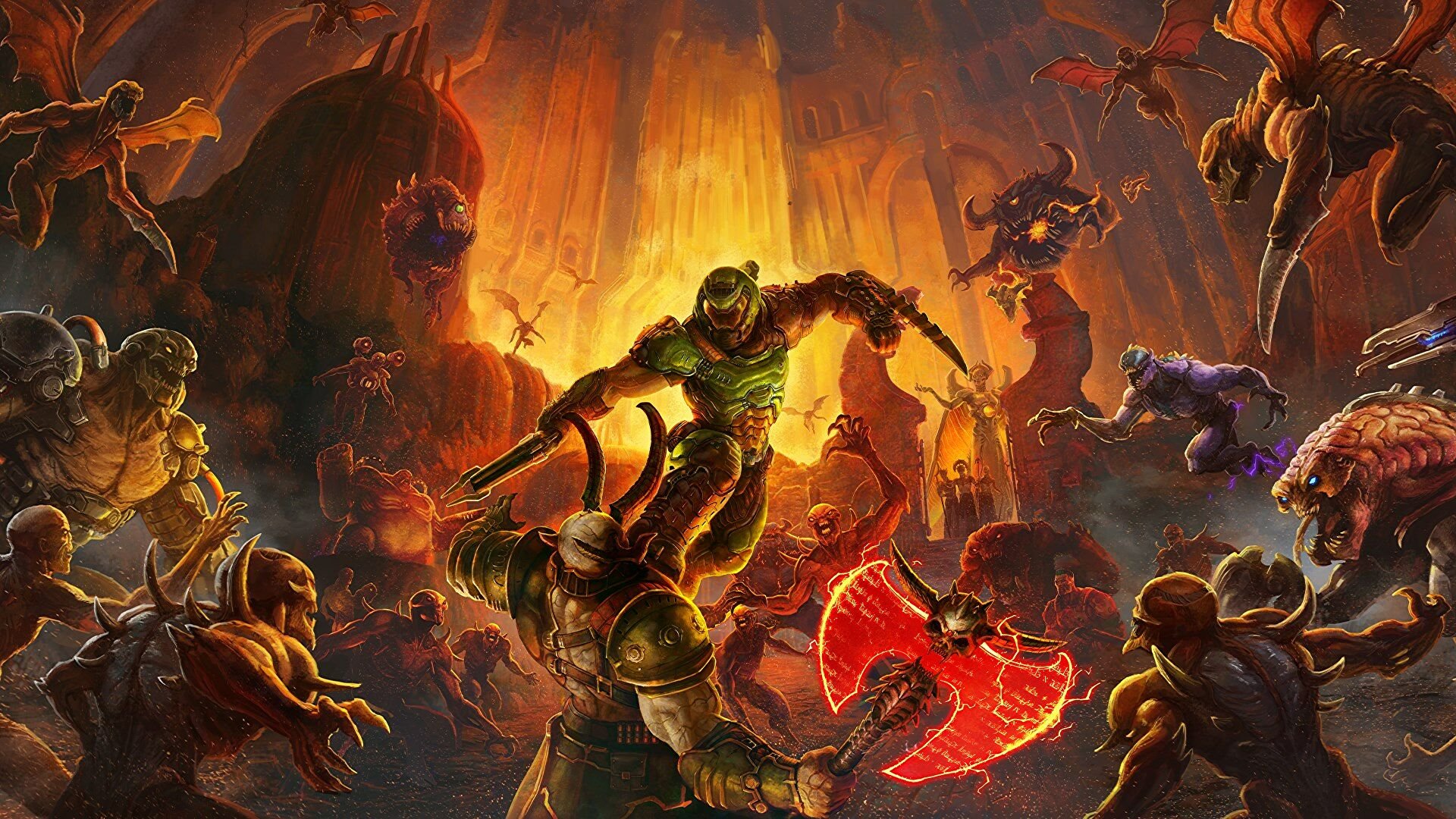How the Modern Doom Lore Got Confusing
Doom is a classic first-person shooter. It hit the scene in 1993 and was a smashing success, at one point being installed on more computers than windows. It ushered in the age of the modern first-person shooters and revolutionized the games industry for years to come. When everyone thinks of Doom, they think of fast-paced demon killing. So when Doom got rebooted in 2016, 12 years after Doom 3 hit shelves, everyone was excited and nervous about a departure from the Doom identity. The game was great, killing demons that resemble their classic counterparts and guns that were fun to shoot.
Doom 2016 had some story to it, but it was relatively light and optional. You play as the legendary “Doom Slayer,” a character so angry and powerful that he was only defeated when an entire CITY was dropped on top of him. This is already more story for a Doom game than usual. There were other things that were deep but not essential, such as a race of people called the “Night Sentinels” and a few other things like that but could be ignored for the gameplay. However, people liked this new story for the most part, and since it was in the background, it didn’t force itself on those who didn’t care. So why is the story an issue now in 2022? Well, it all starts with the sequel to Doom 2016, Doom Eternal.
Doom Eternal came out in March of 2020, and EVERYONE was hyped. The game was either going to be the best Doom game of all time or a poor rehash of Doom 2016. One common complaint fans had was that Doom attempted to have a “central plot” that ran through the story. Doom 2016 did this but was more subtle with its lore that could be ignored. However, doom Eternal’s story was right in your face, and though the cutscenes were skippable, they still were much more present than Doom 2016.
Another thing was the actual contents of the story this time around. To give a brief explanation: It is revealed in Doom Eternal that the Doom Slayer was the original “Doomguy” from the first game released in 1993. This is the most confusing twist, and though it was great fan service, it left quite a bit of explaining to do. How did he get so strong? How did he end up with the Sentinels? And where did all angels come from?
The entire way we understood the “Modern Doom Story” was completely separate from any other piece of the Doom franchise. Along with the reveal that Dr. Samuel Hayden, the robot scientist from the Mars base is actually an ANGEL? WHAT? And his trusty A.I. companion V.E.G.A is actually GOD? We had no mention of angels or God before Doom Eternal, and the “hidden identities” of previously established characters was incredibly jarring.
Doom Eternal: The Ancient Gods was split up into two parts as DLC (Downloadable Content). Part one was mostly without confusion except for the ending in which the Dark Lord satan himself is restored to his body so that he can be killed once and for all. Not only that, but he LOOKS JUST LIKE THE DOOM SLAYER. WHY? All of the cliches that Doom tries to go for here make no sense in the context of the story. People who didn’t read any of the extra material were confused and came to the story fanatics, who still couldn’t tell them anything because they were just as puzzled as they were. Even the game director Hugo Martin kind of explains this one away and says not to look too deep into it.
Part Two of The Ancient Gods only got more and more perplexing. The Dark Lord is revealed to be the “first creator” of all life, and V.E.G.A overthrew him as his first creation. This ramping up of previous characters completely undercuts a lot of the tone set by the past two games. Sure all of these reveals are epic on a grand scale for the final battle and all that, but Doom was about killing demons and listening to epic music, not whatever the heck was all that I just wrote. Doom tried to have a deep story and lore, which fell flat on its face.



